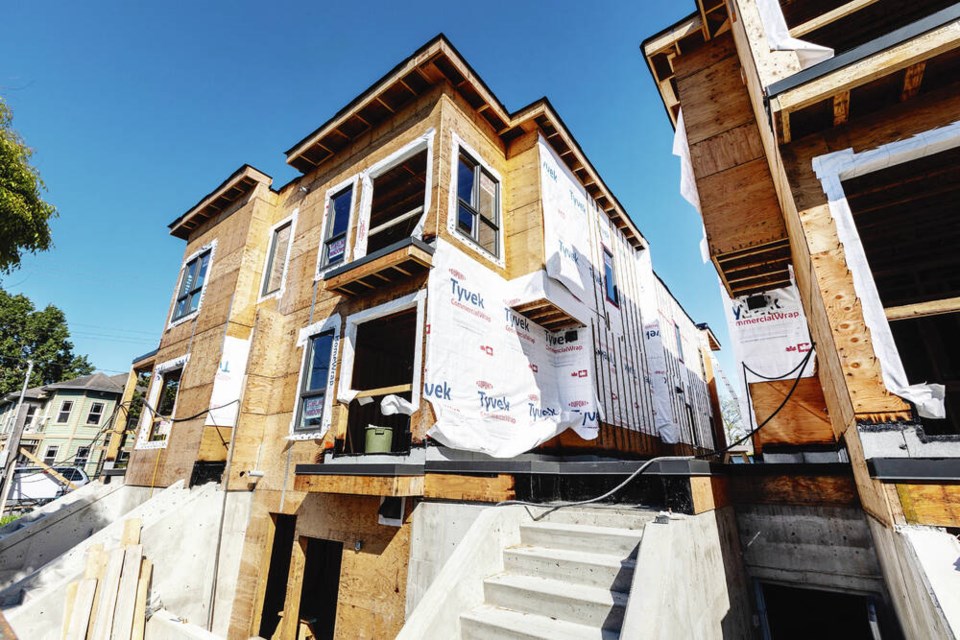Greater Victoria’s housing starts in the first quarter of this year are running slightly ahead of the same months last year, but there’s no predicting what will happen for the remainder of 2023, given economic conditions.
So far this year, 1,179 homes have been started, up marginally from 1,150 in January through April 2022, Canada Mortgage and Housing Corp. said in its monthly report released Monday.
On a monthly basis, starts in Greater Victoria came in at 91 in April, dipping significantly below April 2022, when 330 homes got underway — a drop of 72 per cent. Last month was also far below March, which saw 325 starts.
Prior to April, the capital region was up by 32 per cent for the first three months of this year over last year. Last month wiped out that bump.
“I think we are starting to see the impact of higher interest rates and a reluctance to get into the [speculative] home market,” said Casey Edge, executive director of the Victoria Residential Builders Association.
Edge cautioned, however, that “one month does not make a trend.”
“That’s why I like the year-to-date numbers. Moving forward, we will see if there’s a continued decline in housing starts and whether we drop off versus last year.”
Multi-family buildings, either condominiums or rental units, give developers economies of scale. But single-family homes are typically pricier to build.
Year-to-date single-family home construction is down 47 per cent and townhomes are down by 55 per cent, Edge said.
Challenges for developers include difficulty in winning rezoning, along with costs such as amenity contributions, he said. Developers are often asked by municipal councils to pay for public amenities such as green space in return for getting the go-ahead for a development.
Construction start dates can vary widely depending on a range of factors such as municipal approvals, financing, economic and labour conditions.
Nationally, the seasonally adjusted annual rate for April was 261,559 units, up 22 per cent compared with March, driven by higher numbers of starts in the multi-family sector.
CMHC put the seasonally adjusted annual rate of housing starts in April at 261,559 units, up from 213,780 in March.
This increase arrived as the annual pace of urban starts rose 26 per cent to 241,585 units in April, while the annual rate of multi-unit urban starts rose 33 per cent to 201,621 units. The annual rate of single-detached urban starts fell two per cent to 39,964.
The annual pace of housing starts in Vancouver was up 36 per cent in April.
Rishi Sondhi, TD economist, said that starts bounced back significantly last month, even with winter storms in some regions early in April. That bolstered construction and overall economic growth.
Even so, starts are trending downwards as they respond to fewer single-family detached units as sales decline and contribute to a slowing in construction activity.
“Moving forward, we think that starts will continue to trend lower, thanks to past declines in home sales passing through to weaker homebuilding. This will weigh on residential investment and GDP growth this year,” he said.
>> To comment on this article, write a letter to the editor: [email protected]



